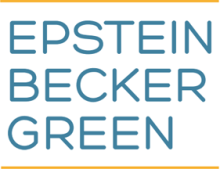In recent years, the Centers for Medicare & Medicaid Services (CMS) has approved demonstrations under Section 1115 of the Social Security Act, providing federal matching funds for state expenditures for Designated State Health Programs (DSHP) and Designated State Investment Programs (DSIP) that advance the Medicaid program.
But on April 10, CMS published a State Medicaid Director Letter stating CMS “does not anticipate approving new state proposals of section 1115 demonstration expenditure authority for federal DSHP or DSIP funding or renewing existing Section 1115 demonstration expenditure authority for federal DSHP or DSIP funding, including when current DSHP or DSIP authority concludes before the expiration date of the demonstration.”
The reasoning? CMS has concluded that these programs were funded entirely without Medicaid funds prior to their approval, and the additional federal funds that they received “does not render these programs as integral components of section 1115 demonstration programs.” CMS now frowns on the notion that the federal government should: (i) share in the costs of funding these state programs; (ii) reduce state obligations with respect to services that CMS deems not otherwise covered by Medicaid; (iii) and “[serve] primarily as a financing mechanism for states, resulting in increased federal expenditures.”
“Despite the safeguards implemented in the post-2022 approvals of DSHP, CMS has renewed concerns about the same issues originally identified in 2017,” the letter states.
Background
Section 1115 of the Social Security Act provides the Secretary of Health and Human Services (HHS) with authority to approve experimental, pilot, or demonstration projects likely to further the traditional goals of the Medicaid program. The waiver authority specifically allows states to include the costs of such projects as spend under its Medicaid State plan, which makes the spend eligible for federal matching support so that the state no longer has to fund the services entirely out of its general fund. CMS reviews proposals on a case-by-case basis to determine alignment with Medicaid and federal policies (which we note tend to shift with each administration). These projects are, or were, generally approved for an initial five-year period and may be extended upon approval.
CMS attempted to phase out expenditure authority for DSHP in Section 1115 Demonstrations in 2017 and in 2022, limited the size and scope of DSHP with required state contributions, a cap on the total amount of federal and state DSHP expenditure authority, and time limits for federal funds.
The April 10 letter comes one week after the U.S. Senate voted 53-45 to confirm Dr. Mehmet Oz as the 17th CMS Administrator. A press release issued the same day briefly outlined Oz’s vision for the agency, focusing on:
- Implementing the president’s February 25, 2025, executive order on health care price transparency;
- Equipping health care providers with better patient information and holding them accountable for health outcomes (as an example, streamlining access to life saving treatments);
- Identifying and eliminating fraud, waste, and abuse;
- Fostering prevention, wellness, and chronic disease management over a focus on sick care (mentioning a focus on programs that improve holistic outcomes)
Another April 10 press release—entitled “CMS Refocuses on its Core Mission and Preserving the State-Federal Medicaid Partnership”—describes CMS policy with respect to DSHPs and DSIPs in more detail. It announces “an end to spending that duplicates resources available through other federal and state programs and are not tied directly to healthcare services.”
“DSHPs and DSIPS are state-funded health programs that, without ‘creative interpretations’ of section 1115 demonstration authority, would not have qualified for federal Medicaid funding,” the Core Mission press release states. It added that DSHPs and DSIPs have grown from approximately $886 million in 2019 to nearly $2.7 billion in eligible expenditures in 2025.
While it remains to be seen how far the “Core Mission” will go with respect to cutting initiatives that it deems too distant, examples of services that CMS has already determined do not tie “directly” to services provided to Medicaid beneficiaries include:
- $11M in grants to a labor union in New York to reduce costs of health insurance for certain childcare providers;
- $241M for a program in New York for non-medical in-home services, such as housekeeping;
- $17M for a California student loan repayment program;
- $20M in grants to high-speed internet for rural health care providers in North Carolina; and
- $3.8M for a diversity in medicine initiative in New York.
Note that New York’s current 1115 Waiver Amendment, for example, covers a range of health-related social needs services (HRSNs) beyond “housekeeping” to address food, housing, and transportation instabilities that impact health outcomes for New York Medicaid enrollees; all of these would fall under the April 10 letter. We previously discussed New York’s 1115 Waiver Amendment here and here.
The Trump Administration has already changed its public resources to align with the messaging in the April 10 State Medicaid Director Letter. CMS updated its Medicaid pages to include the April 10 letter and to emphasize that demonstrations must be “budget neutral” to the federal government.
Takeaways
At an unprecedented time of cost-cutting in the federal government, CMS’s refusal to share in the costs of funding these state programs shifts the burden back to the states—which will also have to decide, at an unprecedented time of upheaval, whether to cover these costs. Too, we are perhaps looking at a CMS that is less likely to recognize, for example, long-recognized home and community asked services that provide assistance to daily living activities for someone electing to age in the community instead of in an institution, or education and workforce supports to those looking to contribute to the health care field. CMS pulled back on guidance relating to HRSNs in early March.
There are currently 25 states with approved social determinants of health provisions in their 1115 waivers—which may fall under the policies outlined in the April 10 letter—and another six states with pending waiver amendments. Providers, vendors, and community-based organizations operating in states with Section 1115 waivers may encounter significant revenue pressure as the funding for these services dries up. To the extent possible, alternate plans will be needed and the challenges will be substantial. Stakeholders potentially impacted should be aware of when their funding is slated to end; CMS states that the Center for Medicaid and CHIP Services (CMCS) will conduct direct outreach to states to confirm the end date for current DSHP or DSIP authority.





 />i
/>i

